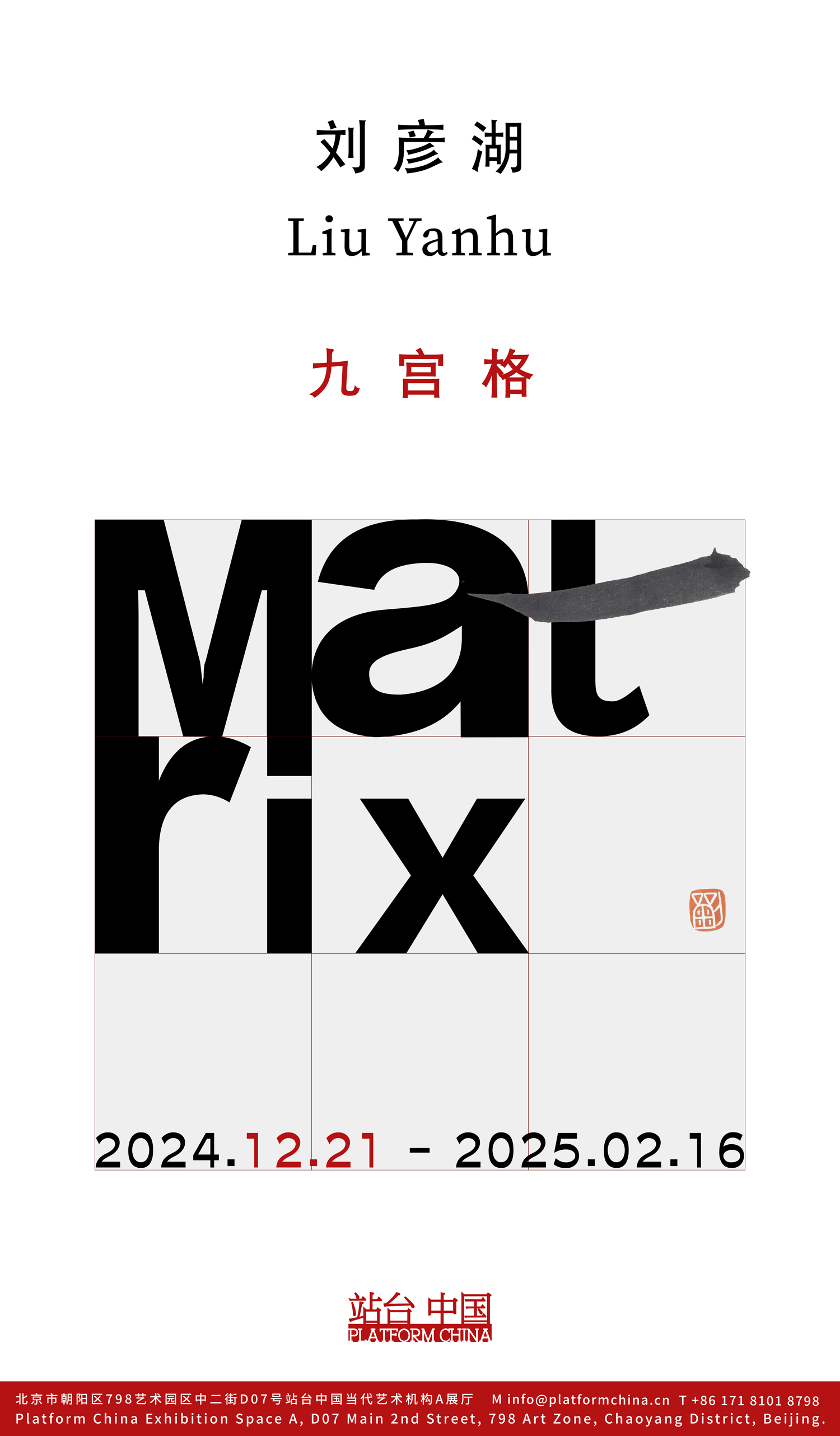Platform China Contemporary Art Institute will present Liu Yanhu's second solo exhibition "Chinese Matrix" (Jiu Gongge) on December 21st (Winter Solstice), showcasing his recent "Chinese Matrix" series and the underlying rationale, demonstrating his deepening understanding of traditional cognition and his exploration of the contemporaneity of calligraphy. The exhibition will be held in Halls A & B and continue until February 16, 2025.
On the Winter Solstice—when the day is at its shortest and the night at its longest, with the celestial pole pointing directly north—Kunming Lake's Seventeen-Arch Bridge in the Summer Palace will create a magnificent spectacle as the setting sun casts golden light through its arches. This is a masterpiece formed by the harmony of nature and human craftsmanship. Similarly, China's historical creations have largely interacted with the spirit of the universe, and the "harmony with the cosmos" in Chinese calligraphy is precisely this. Today, the Chinese people's long-standing concept of "the sky is round and the earth is round" is increasingly confirmed by the archeological objects – the unearthed Demo-plate (also known as the Heaven-earth Plate) that can be dated back to more than 2000 years ago from the Warring States period to the Qin and Han Dynasties. Ersheng (two-rope), Sifang (four-direction), Wuwei (five-position), Bagua (eight-diagram), Jiugong (nine-box grid), Shigan (ten-stem), Shi’er Dizhi (twelve-earthly-branch) and Xuanjiyuheng (an ancient astronomical instrument), and the twenty-eight constellations... all these important concepts and cognitions of the ancient Chinese view of universe were integrated in this little Demo-plate. As early as 1995, Liu Yanhu completed the article "Chinese concept of universe and its trace" to explore the internal link between concept and creation of Chinese people. Over the years, he has kept profound theoretical studies in this field.
The works of Chinese Matrix are a new series that Liu Yanhu has gradually developed in recent years. First, the works present a kind of modernist constitution in structure, and at the same time, they draw lessons from the layout of the Chinese Seal Engraving, breaking the vertical movement of traditional Chinese calligraphy, and changing it into a four-square continuous structure of a great nine-box-grid, each grid is independent, complete and nicety. This kind of layout requires that the font used by him is more similar to the seal script in the main structure, but be more lively and charming at the starting and ending points of the character strokes and some independent dots. By creating the Chinese Matrix works, he has not only created a unique style of writing, but also a unique layout. In other words, he has created a unique calligraphic style with its own aesthetics, constructing structures and generating architectures in the plane with character shapes and meanings, thus forming a form of textual writing. In the "Chinese Matrix," he juxtaposes three words. The particularity, granularity, and continuity of Chinese characters mean that any two characters combined can generate new meanings and spaces, forming a montage image, making the "Chinese Matrix" seem like a minimal-scale "Xuanji Diagram." At the same time, this writing, which takes words rather than sentences as the unit, points to the boundary passage between ancient and modern Chinese in rhetoric. They exist in traditional poetry and are embedded in contemporary life. This attention and awakening to language also respond to the linguistic turn in modern philosophy. If contemporary calligraphy is facing the dilemma of being entangled in images or forms following Japanese modern calligraphy, then the system Liu Yanhu has established with the "Chinese Matrix" may lead to a cryptographic language deciphered by writing and text.
Imitating the ancients saying "only music can't be fake", we could say "only calligraph can't be fake". Within a given space, his temperament is self-evident only when he rebukes the eight poles and moves freely. In fact, it is a dream of each artist that he could create unlimited freedom in restriction.

